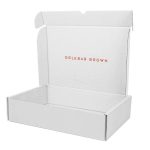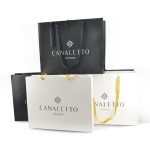In an era where e-commerce deliveries arrive at our doorsteps with clockwork precision, few of us pause to consider the humble corrugated box that makes it all possible. Behind every online order, food shipment, and product delivery lies a sophisticated manufacturing process that has evolved from simple paper containers to engineered protective solutions. Modern corrugated box production represents a fascinating intersection of material science, engineering innovation, and environmental responsibility that keeps global commerce flowing seamlessly.
The journey of a corrugated box begins with its primary raw material: paper. Specifically, the industry relies on kraft paper, known for its superior strength and durability. This paper is manufactured from wood pulp derived from sustainably managed forests, where trees are continuously replanted to ensure a renewable supply. The kraft process involves treating wood chips with heat and chemicals to break down the lignin binding the wood fibers together, resulting in strong, brown paper sheets. Many manufacturers also incorporate recycled content, with some boxes containing up to 70-100% recycled material, creating a remarkable circular economy.
At the heart of corrugated board production lies the corrugator machine, an engineering marvel that can stretch hundreds of feet long in large manufacturing facilities. This massive equipment performs a carefully choreographed dance: it heats the paper, shapes it into the characteristic fluted pattern, and sandwiches it between flat linerboards using adhesive. The fluted medium isn’t just for structural appearance—it creates air cushions that provide shock absorption and insulation while using minimal material. Different flute profiles (A, B, C, E, and F) offer varying combinations of stacking strength, cushioning properties, and printing surface quality, allowing manufacturers to customize boxes for specific applications.
Once the corrugated board is produced, it moves to the converting department where it’s transformed into finished boxes. This stage involves precision cutting, folding, and printing operations. Modern flexographic printing presses can apply vibrant brand colors and product information directly onto the box surface, eliminating the need for additional labels and packaging. Die-cutting machines use custom-designed blades to cut unique box shapes and handle patterns, while folder-gluers automatically fold and seal boxes at astonishing speeds of thousands per hour. This high-speed automation ensures that businesses receive their packaging solutions quickly and cost-effectively.
The innovation in corrugated box production extends far beyond basic shipping containers. Today’s manufacturers create specialized designs with features like built-in handles, display windows, temperature-resistant coatings, and even moisture barriers. The development of advanced testing equipment allows producers to simulate distribution hazards—from vibration and compression to drops and climate changes—ensuring that products arrive in perfect condition regardless of their journey. These engineering advancements have made corrugated boxes suitable for everything from delicate electronics and pharmaceuticals to heavy automotive parts and fresh produce.
Environmental considerations have become central to modern corrugated production. The industry has made tremendous strides in reducing its ecological footprint through water recycling, energy efficiency improvements, and waste reduction initiatives. Most remarkably, corrugated boxes boast a recycling rate of over 90%—the highest of any packaging material. The fibers in corrugated cardboard can be recycled 7-10 times before they become too short for box production, at which point they’re composted or used for energy generation. This commitment to sustainability makes corrugated packaging an increasingly attractive choice for environmentally conscious brands and consumers.
Looking ahead, the corrugated box industry continues to innovate with smart packaging technologies. Some manufacturers are integrating QR codes, RFID tags, and even sensors that can monitor temperature, humidity, and shock during transit. These developments transform simple boxes into data collection tools that provide supply chain visibility and product authenticity verification. Meanwhile, advancements in digital printing enable cost-effective short runs and personalized packaging, allowing even small businesses to create memorable unboxing experiences for their customers.
From protecting precious shipments to telling brand stories and reducing environmental impact, the humble corrugated box has evolved into a sophisticated packaging solution that quietly enables our modern economy. The next time you receive a delivery, take a moment to appreciate the engineering marvel in your hands—a product of careful design, advanced manufacturing, and sustainable thinking that continues to adapt to our changing world.




Leave a Message